 Oceanic Submersibles: Lorenzo Marcello, Enrico Dandolo, Sebastiano Veniero, Andrea Provana, Lazzaro Mocenigo, Giacomo Nani, Agostino Barbarigo, Angelo Emo, Francesco Morosini, Comandante Cappellini, Comandante Faà di Bruno (1939-47)
Oceanic Submersibles: Lorenzo Marcello, Enrico Dandolo, Sebastiano Veniero, Andrea Provana, Lazzaro Mocenigo, Giacomo Nani, Agostino Barbarigo, Angelo Emo, Francesco Morosini, Comandante Cappellini, Comandante Faà di Bruno (1939-47)WW2 Italian Submarines
Balilla class (1927) | Ettore Fieramosca (1929) | Archimede class (1933) | Glauco class (1935) | Pietro Micca (1935) | Calvi class (1935) | Foca class (1937) | Marcello class (1938) | Brin class (1939) | Liuzzi class (1939) | Marconi class (1940) | Cagni class (1940) | Romolo class (1943)Mameli class (1926) | Pisani class (1928) | Bandiera class (1929) | Squalo class (1930) | Bragadin class (1929) | Settembrini class (1930) | Argonauta class (1931) | Sirena class (1933) | Argo class (1936) | Perla class (1936) | Adua class (1936) | Acciaio class (1941) | Flutto class (1942)
CM class (1943) | CC class (Laid down) | CA class (1942) | CB class (1942)
The Marcello class were 11 ocean-going submarines of the Regia Marina entering service between 1938 and 1939, very active during the Second World War. They were derived from the preceding Glauco class with a simple hull, good speed and maneuverability, being capable of diving below 100 meters, built at the Cantieri Riuniti dell’Adriatico shipyards in Monfalcone, OTO in La Spezia. They served in the Mediterranean and Atlantic with two later converted into far east transport submarines to Japan for the Kriegsmarine. Nine were lost in action. In addition Cappellini, caught at the armistice in Sabang, Indonesia was captured by the Kriegsmarine and later the IJN. Enrico Dandolo was the only survivor.
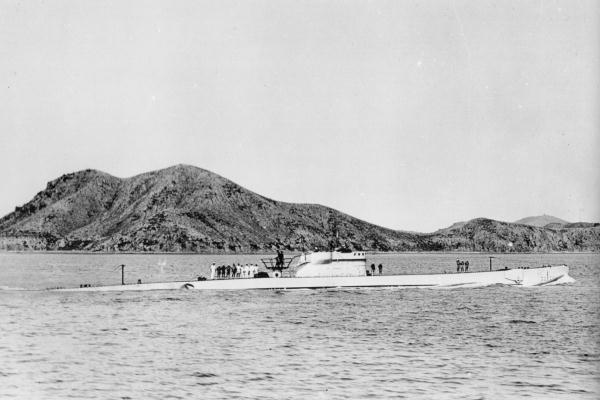
Capellini as UIT-24 in 1944
Design of the class
Development
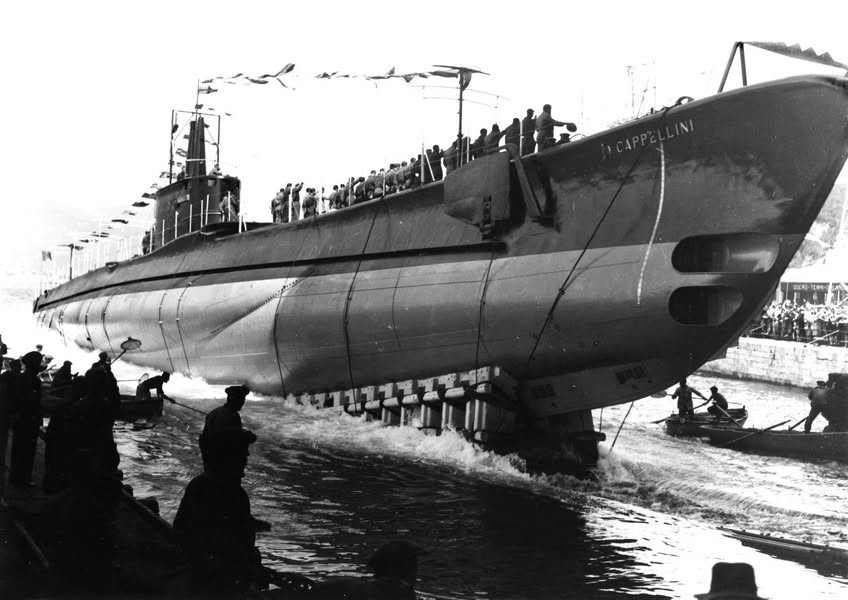
The launch of Capellini (facebook)
A development of the 1936-37 Glauco class pair of oceanic submarines, they remained in the soft spot of “mid-range” oceanic types, and became the best known and most produced Italian submarine in that category prior to WW2. They were of a single-hull type with external bulges, the easiest to produce. No complicated curve and tight integrations. These ended as the best Italian large submarines of the war, fast, with good maneuverability, heavy armament and long range in a relatively small package below the 1,000 tonnes threshold.
Their only weak point like all contemporary Italian submarines was their poor stability and relatively slow diving time, as well as low depth, especially in the Atlantic, where many served with distinction. Their exceptional range and surprisingly roomy interior had them “recruited” by Germany to lead missions to Japan, bringing there and back rare materials and intel, maintaining the axis alliance. This led to very strange situations at the end of the war for Barbarigo and Cappellini.
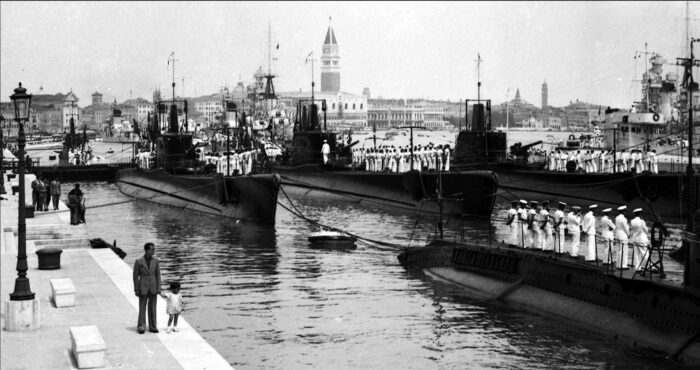
Marcello class boats in Venice 1939 (src reddit)
About the names:
The Marcello class were named after various Italian personalities:
Lorenzo Marcello for example was a famous Venetian Admiral in the 1640-50s.
Enrico Dandolo was perhaps the best known Venetian Doge and founding father of its Navy at difficult times for Christianity. He was notably instrumental in the 4th crusade and sack of Constantinople.
Lazzaro Mocenigo was a one-eyed Venetian nobleman and admiral of the 1600s famous for Cretan War against the Ottoman.
Giacomo Nani (1725–1797) was another Venetian admiral and politician.
Sebastiano Veniero was a Venice Doge in 1577-78 famous for his role in the Victory at Lepanto.
André Provana de Leyni (1511-1592) was a statesman and military commander in the Duchy of Savoy.
Agostino Barbarigo (1419–1501) was Doge of Venice from 1486. Repelled Charles VIII (Fr) and annexed Cyprus.
Angelo Emo (1731-1792) was a Venetian noble, administrator, and admiral, reformer of the Venetian navy.
Francesco Morosini (1619-1694) was Doge of Venice from 1688 in the Great Turkish War.
Commandate Capellini: WW1 captain. But the sub’s captain has a movie.
Francesco Faa di Bruno: A famous writer, scientific and 18th Century Italian independence personality.
Hull and general design
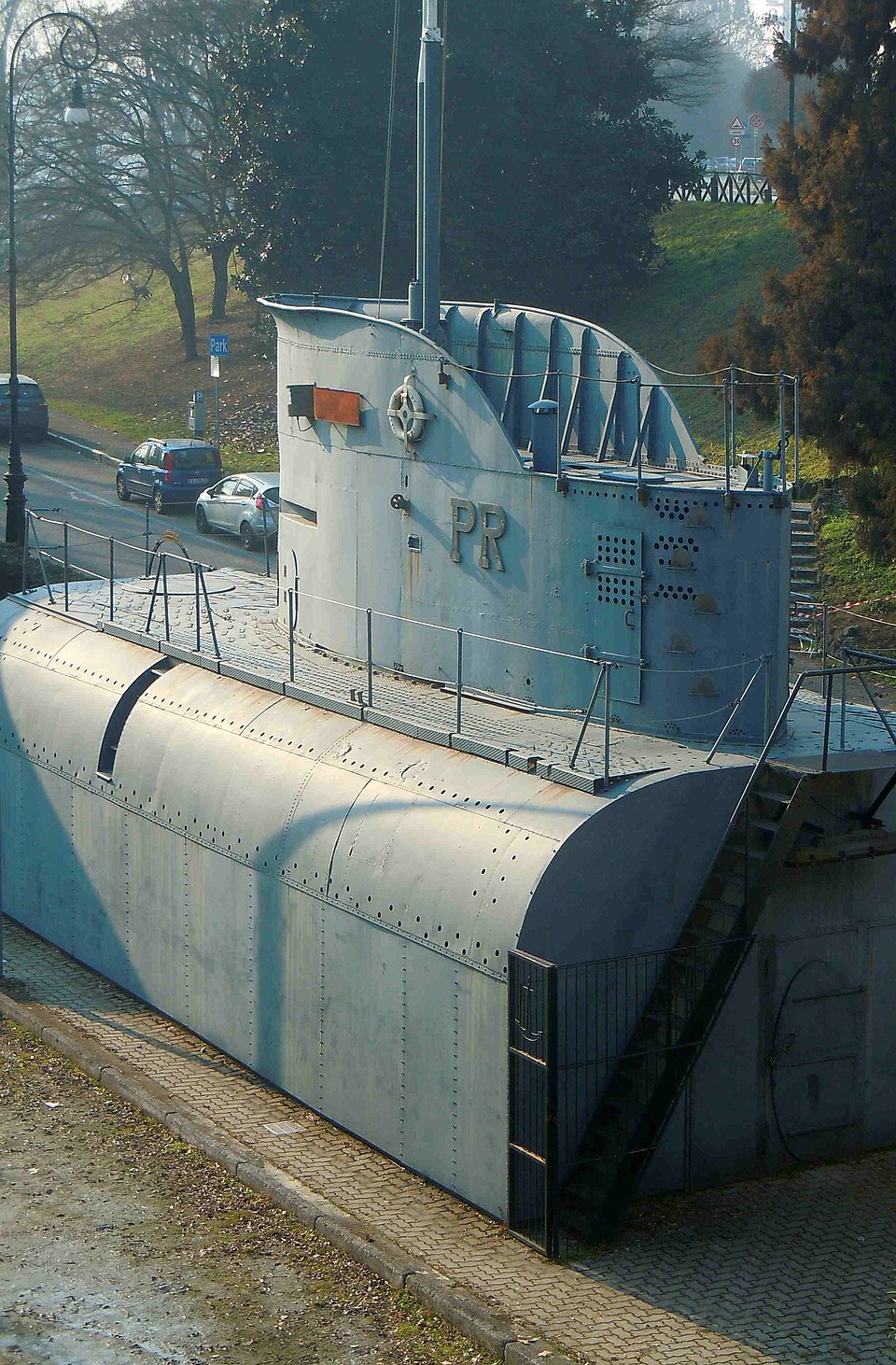
An entire section of Andrea Provana saved and now exposed at Turin, Valentino Park, near the ANMI headquarters.
The Marcello project was derived from that of the Glauco class boats, a pair of ocean-going submarines ordered from Italian shipyards by the Marinha Portuguesa (Portuguese Navy) but later repurchased by the Regia Marina. These boats had shown indeed excellent nautical qualities as well as great autonomy, speed and maneuverability. Thus, the Italian Navy ordered a second class of similar boats with only minimal variations, which became the new Marcello class. They were ordered for the first time in large numbers, and in two series, practically indistinguishable from each other:
The first was composed of nine units all built at the Cantieri Riuniti dell’Adriatico, Monfalcone from 1937 to 1938
The second serie composed of the last two units, was ordered from OTO shipyards, La Spezia built between 1938 and 1939.
The Marcellos were ocean-going (or “da grande crociera””) vessels. They had a single hull with large bulges, supplemented by hull blisters on top amidships for better trim balancing. The hull was still modest in size at 73 metres long overall, 7.2 metres wide (so excellent 1/10 ratio) with a draft of 5.3 metres. Displacement when surfaced was 1,060-1,063 tonnes, rising to 1,312-1,317 tonnes when submerged. They could dive to 100 metres (300 feet) in service, and beyond if needed. The crew comprised 7 officers and 51 petty officers and sailors. Design-wise, they could carry two main guns, 8 torpedoes at a range of 7500 nautical miles, and were able to reach 17 knots surfaced. The hull also had two upwards folding bow dive planes, two anti-collision bars aft, a jettisonable keel and a semi-enclosed conning tower with a windowed helmsman post forward, a narrow deck with two twin machine guns on pintles. The central CT well housed two periscopes, a small attack one and large navigation/Observation persicope.
Powerplant
The propulsion system was conventional, with two diesel engines for surface running with a total power of 3,000-3,200 hp, and two electric motors of 1,100 hp when submerged. Top speed when surfaced was 17 knots (in trials 17.9-18.2 knots were recorded on some boats). Top speed when submerged was down to 8 knots. Both were good figures for the time. The autonomy was 9,760 miles when surfaced the economical speed of 8 knots. At max speed for combat runs, notably catching a convoy by night, they could comfortably make 2,825 miles. Autonmy when submerged was about 110 miles at 3 knots however.
Armament
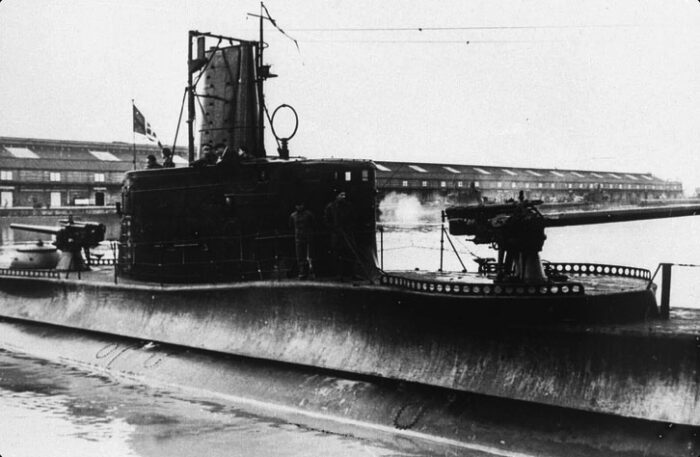
Marcello class conning tower and guns. Note the shell locking holes for ready rounds along the rails on either side of both guns. src reddit
The artillery armament was based on two 100/47 Mod. 1938 guns on deck at the bow and stern, the first on a banstnad like raised deck. This ws completed by two twin mounts for 13.2 mm Breda Modello 31 heavy machine guns for anti-aircraft protection. The torpedo armament comprised a total of eight 533 mm torpedo tubes, four at the bow four at the stern all reloadable internally from the pressure hull. They had a total a supply of twelve torpedoes, not counting the eight already preloaded, leaving four spares.
Cannone da 100/47 Mod. 1938 (1941)
The two 100 mm/43 (3.9″) Modello 1938 was installed fore and aft. The fore gun was mounted as usual on a sprt of bandstand integrated into the hull to break waves and reduced seawater spray.
A slightly improved version of the 100 mm/47 Model 1928 specifically intended for submarines but also used on a few auxiliary vessels. Manufactured by OTO. Slightly shorter than the other 100 mm/47 guns.
In all were developed the 100 mm/47 (3.9″) Models 1931, 1935 and 1938 for Subs, for the Glauco, Marcello, Cappellini, Liuzzi, Marconi, Cagni, Sirena, Perla, Adua, Argo, Acciaio and Flutto classes.
Specs
Gun Length oa: 194.5 in (4.940 m), 8-10 rpm.
Fixed Ammunition (HE) 30.4 lbs. (13.8 kg) 2,756 fps (840 mps)
Range: 35° 13,800 yards (12,600 m), OTO 1932
Weight 4.6 tons (4.7 mt) -5 /+32 or 35°.
To compare the previous Cannone da 100/43 modello 1927 had the following specs:
170 in (4.300 m) long, 8-10 rom. HE shells: 30.4 lbs. (13.8 kg), muzzle Velocity 2,625 fps (800 mps)
Elevation -5/+35°. Range: 30.4 lbs. (13.8 kg) HE Elevation/35° 12,000 yards (11,000 m).
AA: 2×2 Breda Breda Mod. 31
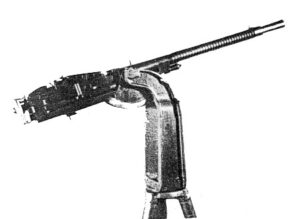
The anti-aircraft defence counted on two twin Breda M1931 13.2 mm L/76 heavy machine guns, placed on a rear platform of the conning tower. Each mount weighed 695 kg, but ensured an elevation of -10° to 90°. They fired 125 g unitary rounds, with a muzzle velocity of 790 m/s, maximum range of 6,000 meters and effective range of 2,000 meters. Their rate of fire was 500 rounds/min, so 2000 rounds when both twin mounts fired in concert, however.
12x 533 mm (21 inches) torpedoes
Model unknown. When completed it had models powered by wet-heaters:
-W 270/533.4 x 7.2 Veloce: 1,700 kg, 7.2 m WH 270 kg, 3,000-4,000 m/50 knots or 12,000 m/30 knots.
-W 270/533.4 x 7.2 “F”: 1,550 kg, 6.500 m, WH 250 kg, speed 3,000 m/43 knots or 10,000 m/28 knots
-W 250/533.4 x 6.5: 1,550 kg, 7.200 m, WH 270 kg, 4,000 m/48 knots or 12,000 m/30 knots.
-Si 270/533.4 x 7.2 “I”: 1,700 kg, 7.2 m, WH 270 kg, speed 3 km/42 kts or 7 km/32 kts, 9,2km/30 knots, 12km/26 kts
-W 250/533.4 x 6.72: 7.2m, WH 270 kg speed 4km/49 kts or 8km/38 kts.
-Si 270/533.4 x 7.2 “M”: 1,7 ton, 7.2 m, WH 270 kg speed 4km/46 kts, 8km/35 kts or 12km/29 kts.
They were also given also a pair of hydrophones.

From pinterest.
profile awaited
⚙ specifications |
|
| Displacement | 1,060 long tons (1,077 t) surfaced, 1,313 long tons (1,334 t) submerged |
| Dimensions | 73 x 7.19 x 5.1m (239 ft 6 in x 23 ft 7 in x 16 ft 9 in) |
| Propulsion | 2× CRDA/Fiat diesels, 2x CRDA electric engines |
| Speed | 17.4 kts (20.0 mph; 32.2 km/h) surfaced, 8 kts (9.2 mph; 15 km/h) submerged |
| Range | 2,500 nmi/17 kts surfaced, 8 nmi/8 knots submerged* |
| Armament | 8× 533 mm TTs (4 bow, 4 stern), 2× 100 mm/47, 2×2 13.2 mm HMG |
| Test depth | 100 m (330 ft) |
| Crew | 58 |
Modifications
During the war, the Marcellos underwent various modifications:
The first were after sea trials and early training. This was to reduce diving time, and visibility when surfaced. The volume of the conning tower was significantly reduced in 1942-43, fully opened (no more enclosed helmsman post), the fairings and columns supporting the periscopes eliminated or reduced.
Two boats in particular, Comandante Cappellini and Agostino Barbarigo, were modified as transport submersible, for “trade” with Japan.
The entire artillery was removed, their torpedo armament was removed as well, in order to maximize internal spaces to accommodate all types of cargo.
This was still a reduced capacity, but their long range and underwater capabilities made them ideal for the job.
Career of The Marcello class
 Lorenzo Marcello (ML)
Lorenzo Marcello (ML)
Lorenzo Marcello (pennant number ML) was laid down at CRDA Montfalcone on 4 January 1937, launched on 20 November 1937, completed on 5 March 1938. She entered the II Submarine Group based in Naples, training until 1940. On 5 June 1940, under command of c. c. Luigi Donini she left Naples for Cape Palos, but returned underway to Cagliari on 10 June due to methyl chloride leaks poisoning the engine compartment. From June and October 1940 she had three unsuccessful Mediterranean patrols over 3,209 miles surfaces and was sent to the Atlantic, leaving Naples on 31 October 1940. On 5 November she crossed the Strait of Gibraltar and laid in Ambush near Cape St. Vincent, informed of two convoys, missed. On 27 November she was ordered to Bordeaux, joining Betasom on 2 December. On 11 January 1941 she left Bordeaux under command of c.c. Carlo Alberto Teppati for a 2nd Atlantic patrol. On 17 January she was deployed west of Ireland, attacked a convoy but was repelled by the escort, damaged on her bow trim tank. Underway she sank by gunnery the Belgian steamer Portugal (1550 TGB). On 24 June she was back in Bordeaux.
On 6 February 1941 she retuned west of Ireland, but was never heard again. Hypothesis are a severe DC attack by HMS Hurricane or the destroyer Montgomery, or the corvette Perwinkle, but they ardly matches Marcello’s 19 February position. Another was a Short Sunderland. Whatever the case she disappeared with all hands, 57 officers and ratings.
 Enrico Dandolo (DO)
Enrico Dandolo (DO)
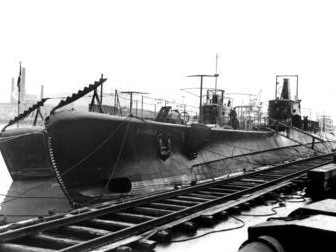 Enrico Dandolo (pennant number DO) waslaid down at CRDA on 14 June 1937, launched 20 November 1937 and completed on 25 March 1938. After unsuccessful Mediterranean sorties she was ordered for the Atlantic and BETASOM base. She departed on 13 August, passed the Strait of Gibraltar on 16 August and arrived at Bordeaux on 10 September 1941 sinking the Ducth Tanker Hermes (3768 GRT), damaging the British cargo ship SS Ilvington Court (5187 GRT) underway. Her second patrol was unsuccessful apart, she sank a single ship, the British tanker Pizzarro (1367 GRT) on 24 January 1941. She made another patrol and left Bordeaux on 26 June, passed Gibraltar on 2 July, arrived to Naples and the II. sqn. on 7 July. For her last patrols she damaged a neutral French tanker on 4 November 1941, sank the neutral Spanish freighter Castillo Oropesa on 8 November 1941, damaging the cruiser HMS Cleopatra on 16 July 1943 (she was in repairs in the US until November 1944). She also narrowly missed the HMS Eagle on 21 July 1942. With the Armistice of Sept. 1943 she was in repairs in Taranto. Repairs in February 1944 she was sent to Bermuda to train US aicraft in ASW. Back in Italy she was placed in reserve and discarded in February 1948.
Enrico Dandolo (pennant number DO) waslaid down at CRDA on 14 June 1937, launched 20 November 1937 and completed on 25 March 1938. After unsuccessful Mediterranean sorties she was ordered for the Atlantic and BETASOM base. She departed on 13 August, passed the Strait of Gibraltar on 16 August and arrived at Bordeaux on 10 September 1941 sinking the Ducth Tanker Hermes (3768 GRT), damaging the British cargo ship SS Ilvington Court (5187 GRT) underway. Her second patrol was unsuccessful apart, she sank a single ship, the British tanker Pizzarro (1367 GRT) on 24 January 1941. She made another patrol and left Bordeaux on 26 June, passed Gibraltar on 2 July, arrived to Naples and the II. sqn. on 7 July. For her last patrols she damaged a neutral French tanker on 4 November 1941, sank the neutral Spanish freighter Castillo Oropesa on 8 November 1941, damaging the cruiser HMS Cleopatra on 16 July 1943 (she was in repairs in the US until November 1944). She also narrowly missed the HMS Eagle on 21 July 1942. With the Armistice of Sept. 1943 she was in repairs in Taranto. Repairs in February 1944 she was sent to Bermuda to train US aicraft in ASW. Back in Italy she was placed in reserve and discarded in February 1948.
 Lazzaro Mocenigo (MO)
Lazzaro Mocenigo (MO)
Lazzaro Mocenigo (pennant number MO) was laid down in May 1937 at CRDA, launched 20 November 1937, commissioned on 16 August 1938. She was assigned to the II Submarine Group in Naples, used for training under command of Lt. Codr. Ferruccio Ferrini from 1938 to 1940. In June 1939 under LtCdr Giulio Chialamberto she sailed to Vigo to verify currents to cross the Strait of Gibraltar. She made three patrols without kill under Vittore Carminati and was sent to the Atlantic from 24 November 1940 under Alberto Agostini from La Spezia and reached her ambush area off Porto. On 2 she attacked but missed an auxiliary cruiser and four destroyers off Cape Spartel. On 21 December she attacked the convoy OG. 47 and sank the Swedish steamer Mangen (1253 GRT). On the 22nd, she attacked surfaced the Sarastone (2473 GRT), saved when her gun jammed. She lost 4 as she fired back. On 26 December she entered Bordeaux. Her second patrol was from March 1941 west of Ireland, spotting a convoy on the 9th and went back on the 22th. May 1941 saw her off the coast of Morocco but missed a convoy and was bavk on the 7th. She left on 16 August, on the 23rd passed Gibraltar for La Spezia. In December she transported 15 tons of supplies and 59 tons of gasoline to Derna and on 15 March 1942 sank with the French tanker Sainte Marcelle (1518 GRT) north of Cape Falco. She made more supply runs for the Afrika Korps and on 20 March 1942 at 15:33, launched four on HMS Argus, the torpedoes apparently prematurely detonated.
On 18 May she launched three but missed a cruiser protecting Eagle and Argus. On 19 November 1942 near Cap de Fer under LtCdr Alberto Longhi she attacked a transport, probable damage.
On 14 December, off Bona she reported an attack on a “Tribal-class destroyer”, in fact HMS Argonaut, hit by two torpedoes, survived after long repairs of almost a year. On 30 January 1943, she launched four on a convoy off Capo Carbon, reported detonations, no kill. On 10 April 1943, she was badly damaged by a US air raid in La Maddalena base, repaired at Castellamare di Stabia and Cagliari. On 13 May 1943, same story and she sank for good with 5 men.
 Giacomo Nani (NI)
Giacomo Nani (NI)
Giacomo Nani (pennant number NI) was laid down on 14 January 1936, launched on 16 January 1938, comm. on 5 Sept. 1938. She was assigned to the II Submarine Group in Naples, training from 1938 to 1940. She made three unsuccessful patrols in the Mediterranean (3,796 miles). On 23 July 1940,she missed a destroyer off Morocco. The captain complained of duds.
She departed for the Atlantic on 29 September 1940 under LtCdr Gioacchino Polizzi, passed Gibraltar on 4 October and on 5 October sanking the armed trawler HMS Kingston Sapphire (356 GRT) 50 miles from Cape Spartel by guns. She laid in ambush at Madeira and sailed for Bordeaux, crossing the path of the Greek steamer Sulliotis inspected on 23 October and on 27 October of the Swedish steamer Maggie (1583 GRT), sank her with guns. She departed Bordeaux on 13 December 1940, and a wave washed over and nearly killed LtCdr Renato Rizzoli and a lost a gunner so she went back, being attack while in port on 17-18 December by aircraft. Her AA gunners claimed one. She departed on 20 December under LtCdr Ernesto Porzio for the Irish coast, but was reported overdue on 3 January 1941. Britis records claimed she was sank by the corvette HMS Anemone on 7 January 1941, the real reason isstil unknown. She sank with all hands and LtCdr Gioacchino Polizzi.
 Sebastiano Veniero (VN)
Sebastiano Veniero (VN)
Sebastiano Veniero (pennant number VN) was laid down at CRDA on 23 January 1937, launched 14 February 1938, completed on 6 June. After a single unsuccessful Mediterranean patrol, she crossed Gibraltar on 7 July 1940 for the Atlantic, ambushing off the Canary Islands and passed Gibraltar back on 27 July, first Axis submarine to do so in World War II, reporting very adverse currents (many of the class were dragged down to 140m underway). She left Naples on 28 September, passed Gibraltar for a second Atlantic patrol, sank two ships (Agnete Maersk/2104 GRT, steamer Ariosto /2176 GRT), and arrived to Bordeaux on 2 November. In total she would only these for six BETASOM patrols. She left Bordeaux on 8 August 1941, passed Gibraltar to La Spezia on 2 September. She was never head about after her 7th patrols, presumed sunk (not confirmed) by a Consolidated PBY Catalina on 7 June 1942.
 Andrea Provana (PR)
Andrea Provana (PR)
Andrea Provana (pennant number PR) was laid down at CRDA on 3 February 1937, launched 16 March 1938, Commissioned on 25 June 1938 under command of Lieutenant Commander Ugo Botti, 21st Submarine Squadron in Naples. On 5 June 1940 she sailed for the coast of North Africa. At around 4:00 pm on 17 June 1940, 80 miles from Oran, she sighted the French convoy «IR2F» sailing from Oran to Marseille, five transports strong, escorted by the avisos (sloops) Commandant Bory and La Curieuse. From 1800 meters she launched two torpedoes, missed, and draw attantion of La Curieuse (they spotted the wake 200 meters away), followed bit to the point of origin, and perhaps air bubbles escaping stil by Provana’s torpedo tubes, determined her position and both sloops dropped all their depth charges in a methodical pattern. Commander Botti decided to surface and try a gun duell which as not far fetch and the French units were lightly armed. But as she emerged, La Curieuse arrived and while prepared to launched more depth charges she ram her instead at high speed and broke her in two. She sank with all hands, 62 men, first Italian sub sunk in WW2.Commander Botti was later awarded the first gold medal for military valor.
 Agostino Barbarigo (BO)
Agostino Barbarigo (BO)
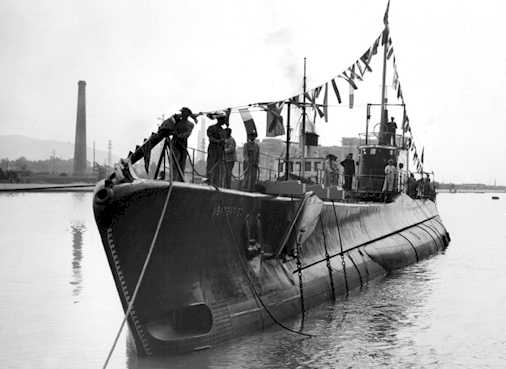
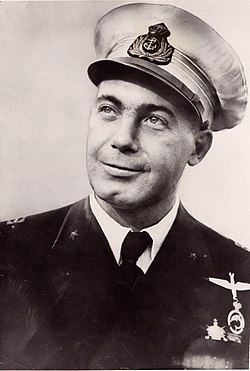 Agostino Barbarigo (pennant number BO) was laid down at CRDA on 5 Feb. 1937, launched 12 June 1938, commissioned on 19 Sept. 1938. After unsuccessful patrols in the Mediterranean, she sailed for Gibraltar on 13 August 1940 for a first Atlantic patrol underway to Bordeaux on 8 September. She made patrols on 14 October-13 November 1940, 10 February-8 March 1941, hitting and damaging the British freighter “Port of Manchester” on 15 May 1941 and later sank two ships on her 4th BETASOM patrol. She made a 5th patrol from 22 October to 12 November 1941, sinking the neutral Spanish freighter Navemar on 23 January 1942. For her 7th patrol she sank one ship, damaged another. Meeting the cruisers USS Omaha and USS Milwaukee:
Agostino Barbarigo (pennant number BO) was laid down at CRDA on 5 Feb. 1937, launched 12 June 1938, commissioned on 19 Sept. 1938. After unsuccessful patrols in the Mediterranean, she sailed for Gibraltar on 13 August 1940 for a first Atlantic patrol underway to Bordeaux on 8 September. She made patrols on 14 October-13 November 1940, 10 February-8 March 1941, hitting and damaging the British freighter “Port of Manchester” on 15 May 1941 and later sank two ships on her 4th BETASOM patrol. She made a 5th patrol from 22 October to 12 November 1941, sinking the neutral Spanish freighter Navemar on 23 January 1942. For her 7th patrol she sank one ship, damaged another. Meeting the cruisers USS Omaha and USS Milwaukee:
On 30 April she departed for her 8th patrol, 17 May she reached her sector off Cape San Rocco, shelled the Brazilian steamer Comandante Lyra (5052 GRt) (made it to Recife, lost). On 20 May, two ships arrived in the area, USS Milwaukee and the destroyer USS Moffet. LtCdr Grossi attacked them, believing he was facing a Colorado-class battleship, missed both but communicated to the base otherwise. on 22 May she was attack by airplane. On 28-29th he sank by gunfire the steamer Chalbury (4836 GRT) and was back on 16 June.
Despite his claims, Grossi received two Medaglie D’Oro. The second was decerned with compliments of Adolf Hitler and Karl Dönitz, with the order of Knight of the Iron Cross and promotion to captain. This was against Rear Admiral Polacchini which persisted his alleged sinkings were untrue. Mussolini which saw the value in these claims removed him from office and placed Grossi at the head of Betasom. The two sinkings of battleships were already considered dubious at the time in Naval circles, and became the subject of an investigation in absentia by two commissions of inquiry in 1949 and 1962, endind with the withdrawal of the two decorations Grossi received, demotion and removal from his posts.
On her 9th patrol she missed the Flower-class HMS Petunia (and reported another battleship sank). She sank two Allied ships and another neutral vessel, the Spanish freighter Monte Igueldo in this patrol. She was then converted to a transport submarine, leaving Bordeaux on 17 June 1943, sunk by aircraft in the Bay of Biscay (most probable). Postwar accounts tells the following: One air attack on the afternoon of 17 June 1943, when the submarine was surfaced with bombs. Or on the morning of 19 June 1943, by an US aircraft which attacked several times a surfaced submarine, seriously damaging her, forced her to submerge by the stern, listing 45°.
 Angelo Emo (EO)
Angelo Emo (EO)
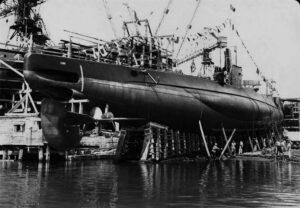 Emo (pennant number EO) was laid down at CRDA on 16 Feb. 1937 and launched 29 June 1938, completed on 10 October, assigned to the 2nd GupSom Naples. After a first war patrol in the Mediterranean where under Carlo Liannazza she spotted Force H but was too far to attack, she was sent for the Atlantic, passing Gibraltar on 29 August 1940 underway to Bordeaux on 3 October. On 14 Sept. she sank the British steamer Saint Agnes (5199 GRT) en route to Bordeaux. After unsuccessful patrols 31 Octobe- 6 November 1940 and 5 December- January 1941, under LtCdr Giuseppe Roselli Lorenzini, she sank a 4000t tanker on her third BETASOM patrol on 16 December. After another unsuccessful BETASOM patrol, she departed Bordeaux on 20 August for Gibraltarand Naples on 1 September 1941. She remained two months as training boat at the submarine school in Pola and made several Mediterranean patrols. Under Guiseppe Franco in August 1942 she attacked and missed a cruiser off La Galite Island. On November 7, 1942, she sailed from Cagliari underway to her ambush zone south of Sardinia and then north of Algiers for the Allied landing. On November 10, she was detected by the British ASW trawler HMS Lord Nuffield. She was generous with depth charges, causing serious damage, forcing her to surface, followed by a brief and violent artillery clash. She lost 14 men, her CT and both guns were destroyed and the captain ordered her scuttling. Survivors were rescued by the ships present.
Emo (pennant number EO) was laid down at CRDA on 16 Feb. 1937 and launched 29 June 1938, completed on 10 October, assigned to the 2nd GupSom Naples. After a first war patrol in the Mediterranean where under Carlo Liannazza she spotted Force H but was too far to attack, she was sent for the Atlantic, passing Gibraltar on 29 August 1940 underway to Bordeaux on 3 October. On 14 Sept. she sank the British steamer Saint Agnes (5199 GRT) en route to Bordeaux. After unsuccessful patrols 31 Octobe- 6 November 1940 and 5 December- January 1941, under LtCdr Giuseppe Roselli Lorenzini, she sank a 4000t tanker on her third BETASOM patrol on 16 December. After another unsuccessful BETASOM patrol, she departed Bordeaux on 20 August for Gibraltarand Naples on 1 September 1941. She remained two months as training boat at the submarine school in Pola and made several Mediterranean patrols. Under Guiseppe Franco in August 1942 she attacked and missed a cruiser off La Galite Island. On November 7, 1942, she sailed from Cagliari underway to her ambush zone south of Sardinia and then north of Algiers for the Allied landing. On November 10, she was detected by the British ASW trawler HMS Lord Nuffield. She was generous with depth charges, causing serious damage, forcing her to surface, followed by a brief and violent artillery clash. She lost 14 men, her CT and both guns were destroyed and the captain ordered her scuttling. Survivors were rescued by the ships present.
 Francesco Morosini (MS)
Francesco Morosini (MS)
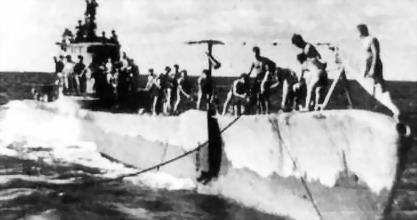 Francesco Morosini (pennant number MS) was laid down at CRDA on 2 march 1937, launched 28 July 1938 and commissioned on 11 November 1938 under LtCdr Alfredo Criscuolo. She was assigned to the 2nd GrupSom Naples, training from 1938 to 1940. She carried out two patrols in the Mediterranean and on 15 June 1940 attacked surfaced a French ship near Cape Palos (missed). The following day she spotted a convoy but was too far. On 21 June she launched a torpedo on a merchant ship, not confirmed. On 25 October she left Naples for Gibraltar and arrived off Porto, until 26 November, she headed for Bordeaux. Her first sortie was on 22 January 1941, in Scottish waters from 29 January. On 8 February she missed a merchantman. On 24 February she was back after searching for a reported aircraft carrier.
Francesco Morosini (pennant number MS) was laid down at CRDA on 2 march 1937, launched 28 July 1938 and commissioned on 11 November 1938 under LtCdr Alfredo Criscuolo. She was assigned to the 2nd GrupSom Naples, training from 1938 to 1940. She carried out two patrols in the Mediterranean and on 15 June 1940 attacked surfaced a French ship near Cape Palos (missed). The following day she spotted a convoy but was too far. On 21 June she launched a torpedo on a merchant ship, not confirmed. On 25 October she left Naples for Gibraltar and arrived off Porto, until 26 November, she headed for Bordeaux. Her first sortie was on 22 January 1941, in Scottish waters from 29 January. On 8 February she missed a merchantman. On 24 February she was back after searching for a reported aircraft carrier.
On 30 April 1941, under LtCdr Athos Fraternale sshe sailed west of Ireland, surfaced and gunned the tanker Vancouver (5727 GRT) which managed to get away. On May 15, she was attacked by aircraft, forced to dive. She missed two convoys due to rough sea and nav errors. On 28 June she sailed for West Gibraltar, and on 14-15 July she sank the British freighter Rupert de Larrinaga (5358 GRt) and auxiliary ship HMS Lady Somers (8194 GRT) and returned to Bordeaux. By mid-August 1941 she left Bordeaux west of Gibraltar. On 19 September, she spotted a convoy off Cape Spartel but missed it due to engine failure. On 18 November she left for an area south of the Azores. On 13–14 December she attacked a convoy 250 miles WNW of La Palma but was detected and force away. On 11 January 1942 she sailed for northeast of Guadeloupe. On 23 January she missed the steamer Sagaing. On 11 March she claimed a tanker(unconfirmed) but sank the steamer Stangarth (5960 GRt) and refueled from the submarine Giuseppe Finzi. On 15-16 March she sank the Dutch motor tanker Oscilla (6347 GRT). On 23 March she badly damaged the British tanker Peder Bogen (9741 GRT), finished her off with 60-70 shells. She was back at Bdx on 4 April. On 2 June 1942 she depated with LtCdr Francesco D’Alessandro in command for an ambush zone between San Salvador and Puerto Rico. On the 30th she sank the Danish steamer Tysa (5327 Grt). On 19 July she missed a gunboat. On 27 July she was refuelled by Finzi. On 8 August she transmitted her last message, never heard of again. Postwar accounts had her sunk in the Bay of Biscay on 11 August 1942 by air attack, four bombs when surfaced and seen sinking by the stern.
 Comandante Cappellini (CL)
Comandante Cappellini (CL)

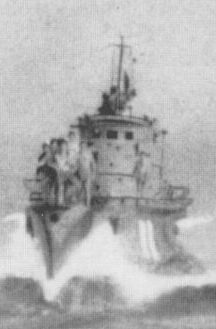 Cappellini was launched 14 May 1939 as the first boat of the “improved Marcello” sub-class. She had a first unsuccessful war patrol but departed on 29 September 1940 for the Strait of Gibraltar, crossed it, arrived on 5 October for a patorl which ended in Bordeaux on 5 November, sinking one ship en route and another, first BETASOM patrol. Next patrols were on 16 April-20 May, 29 June-6 July, 17 November-29 December 1941. She sank two ships on its 5th BETASOM patrol. In her 6th patrol she became famous for her rescue operations of the Laconia incident. In 1943 she was converted to a transport submarine and sailed on 11 May for her first mission to Singapore on 13 July 1943, with 160 tons of mercury, aluminum, welding steel, 20mm guns, ammunition, bomb prototypes, bombsights and tank blueprints for the Japanese. She was seized by Germany after the armistice of September 1943, recommissioned into the Kriegsmarine as UIT-24. Seeing little activity, she was seized by the Imperial Japanese Navy in May 1945, renamed I-503. She was found at Kobe when Japan surrendered, and was later scuttled in Kii Suido by the USN. More
Cappellini was launched 14 May 1939 as the first boat of the “improved Marcello” sub-class. She had a first unsuccessful war patrol but departed on 29 September 1940 for the Strait of Gibraltar, crossed it, arrived on 5 October for a patorl which ended in Bordeaux on 5 November, sinking one ship en route and another, first BETASOM patrol. Next patrols were on 16 April-20 May, 29 June-6 July, 17 November-29 December 1941. She sank two ships on its 5th BETASOM patrol. In her 6th patrol she became famous for her rescue operations of the Laconia incident. In 1943 she was converted to a transport submarine and sailed on 11 May for her first mission to Singapore on 13 July 1943, with 160 tons of mercury, aluminum, welding steel, 20mm guns, ammunition, bomb prototypes, bombsights and tank blueprints for the Japanese. She was seized by Germany after the armistice of September 1943, recommissioned into the Kriegsmarine as UIT-24. Seeing little activity, she was seized by the Imperial Japanese Navy in May 1945, renamed I-503. She was found at Kobe when Japan surrendered, and was later scuttled in Kii Suido by the USN. More
 Comandante Faà di Bruno (FB)
Comandante Faà di Bruno (FB)
Comandante Faà di Bruno (also called Faà di Bruno) (pennant number FB) was laid down on 28 April 1938 at OTO and launched 18 June 1939, completed on 23 October 1939 as the second boat of the “improved Marcello class”. In 1940 she was in the XII SubRon, La Spezia. She carried out a first mission in the Mediterranean 10-16 June 1940, second 15è23 July off Oran.
She was ordered to the Atlantic, leaving La Spezia on 28 August 1940, crossing Gibraltar on 2-3 September and like her sister “kissed the seabed”. On 8-24 September she was stationed south of the Azores and made three attacks: 8 September, a steamer (missed), the second, 9th, British tanker Auris (8000 GRT) damaged, third, 19th another steamer, missed. She arrived in Bdx on 5 October 1940. She sortied on 31 October-3 November, west of Scotland, no kills. Never heard about. British sources attributed her loss to HMS Havelock on 8 November. But her fat was in fact, later revealed this was instead Guglielmo Marconi, which escaped. In reality she wa shunt down by HMCS Ottawa, HMS Harvester defending convoy HX-84. LtCdr Aldo Enrici and his crew went down with her.
Read More/Src
Books
Conway’s all the world’s fighting ships 1922-46
Campbell, John (1985). Naval Weapons of World War Two. Annapolis, Maryland: Naval Institute Press.
Fontenoy, Paul E. (2007). Submarines: An Illustrated History of Their Impact. Santa Barbara, California: ABC-CLIO.
Fraccaroli, Aldo (1968). Italian Warships of World War II. Shepperton, UK: Ian Allan.
Kafka, Roger; Pepperburg, Roy L. (1946). Warships of the World. Cornell Maritime Press.
Giorgio Giorgerini, Uomini sul fondo. Storia del sommergibilismo italiano dalle origini a oggi, Segrate, Arnoldo Mondadori Editore, 2002
Alessandro Turrini e Ottorino O. Miozzi, Sommergibili italiani, Roma, Ufficio Storico della Marina Militare, 1999.
Bagnasco, Erminio (1977). Submarines of World War Two. NIP
Chesneau, Roger, ed. (1980). Conway’s All the World’s Fighting Ships 1922–1946. Conway Maritime Press.
Fraccaroli, Aldo (1968). Italian Warships of World War II. Shepperton, UK: Ian Allan.
Rohwer, Jürgen (2005). Chronology of the War at Sea: The Naval History of WW2 (3rd Revised ed.). NIP
Giorgio Giorgerini, Uomini sul fondo. Storia del sommergibilismo italiano dalle origini a oggi, Mondadori 2002,
Links
uboat.net italian_submarines marcello
navypedia.org/
it.wikipedia.org Classe_Marcello
en.wikipedia.org Marcello-class_submarine
armedconflicts.com Marcello-1937
on battleships-cruisers.co.uk/
2023 movie about the Capellini’s Cdr Todaro
Images:
reddit.com emo launch
Model Kits
1:700 MARCELLO & FOCA Class Waterline: DELPHIS MODELS
on deviantart.com

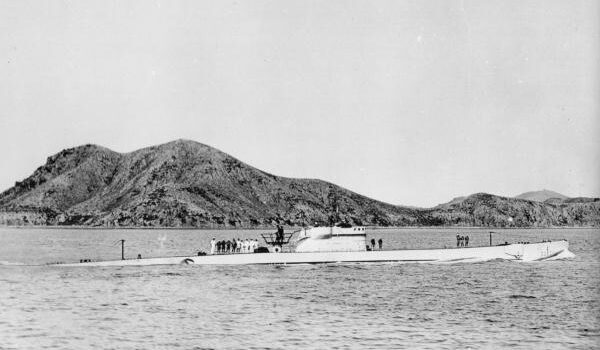
 Latest Facebook Entry -
Latest Facebook Entry -  X(Tweeter) Naval Encyclopedia's deck archive
X(Tweeter) Naval Encyclopedia's deck archive Instagram (@navalencyc)
Instagram (@navalencyc)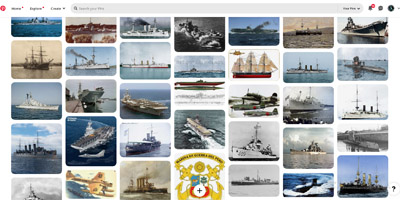


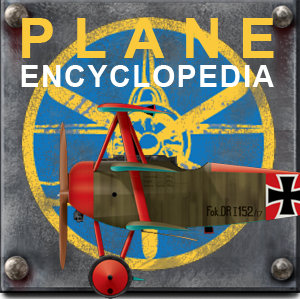
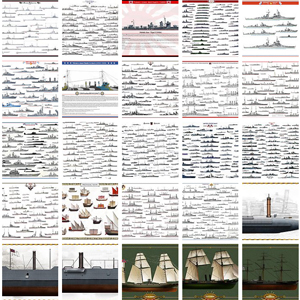

 French Navy
French Navy Royal Navy
Royal Navy Russian Navy
Russian Navy Armada Espanola
Armada Espanola Austrian Navy
Austrian Navy K.u.K. Kriegsmarine
K.u.K. Kriegsmarine Dansk Marine
Dansk Marine Nautiko Hellenon
Nautiko Hellenon Koninklije Marine 1870
Koninklije Marine 1870 Marinha do Brasil
Marinha do Brasil Osmanlı Donanması
Osmanlı Donanması Marina Do Peru
Marina Do Peru Marinha do Portugal
Marinha do Portugal Regia Marina 1870
Regia Marina 1870 Nihhon Kaigun 1870
Nihhon Kaigun 1870 Preußische Marine 1870
Preußische Marine 1870 Russkiy Flot 1870
Russkiy Flot 1870 Svenska marinen
Svenska marinen Søværnet
Søværnet Union Navy
Union Navy Confederate Navy
Confederate Navy Armada de Argentina
Armada de Argentina Imperial Chinese Navy
Imperial Chinese Navy Marinha do Portugal
Marinha do Portugal Mexico
Mexico Kaiserliche Marine
Kaiserliche Marine 1898 US Navy
1898 US Navy Sovietskiy Flot
Sovietskiy Flot Royal Canadian Navy
Royal Canadian Navy Royal Australian Navy
Royal Australian Navy RNZN Fleet
RNZN Fleet Chinese Navy 1937
Chinese Navy 1937 Kriegsmarine
Kriegsmarine Chilean Navy
Chilean Navy Danish Navy
Danish Navy Finnish Navy
Finnish Navy Hellenic Navy
Hellenic Navy Polish Navy
Polish Navy Romanian Navy
Romanian Navy Turkish Navy
Turkish Navy Royal Yugoslav Navy
Royal Yugoslav Navy Royal Thai Navy
Royal Thai Navy Minor Navies
Minor Navies Albania
Albania Austria
Austria Belgium
Belgium Columbia
Columbia Costa Rica
Costa Rica Cuba
Cuba Czechoslovakia
Czechoslovakia Dominican Republic
Dominican Republic Haiti
Haiti Hungary
Hungary Honduras
Honduras Estonia
Estonia Iceland
Iceland Eire
Eire Equador
Equador Iran
Iran Iraq
Iraq Latvia
Latvia Liberia
Liberia Lithuania
Lithuania Mandchukuo
Mandchukuo Morocco
Morocco Nicaragua
Nicaragua Persia
Persia San Salvador
San Salvador Sarawak
Sarawak Uruguay
Uruguay Venezuela
Venezuela Zanzibar
Zanzibar Warsaw Pact Navies
Warsaw Pact Navies Bulgaria
Bulgaria Hungary
Hungary

 Bundesmarine
Bundesmarine Dutch Navy
Dutch Navy Hellenic Navy
Hellenic Navy Marina Militare
Marina Militare Yugoslav Navy
Yugoslav Navy Chinese Navy
Chinese Navy Indian Navy
Indian Navy Indonesian Navy
Indonesian Navy JMSDF
JMSDF North Korean Navy
North Korean Navy Pakistani Navy
Pakistani Navy Philippines Navy
Philippines Navy ROKN
ROKN Rep. of Singapore Navy
Rep. of Singapore Navy Taiwanese Navy
Taiwanese Navy IDF Navy
IDF Navy Saudi Navy
Saudi Navy Royal New Zealand Navy
Royal New Zealand Navy Egyptian Navy
Egyptian Navy South African Navy
South African Navy






























 Ukrainian Navy
Ukrainian Navy dbodesign
dbodesign